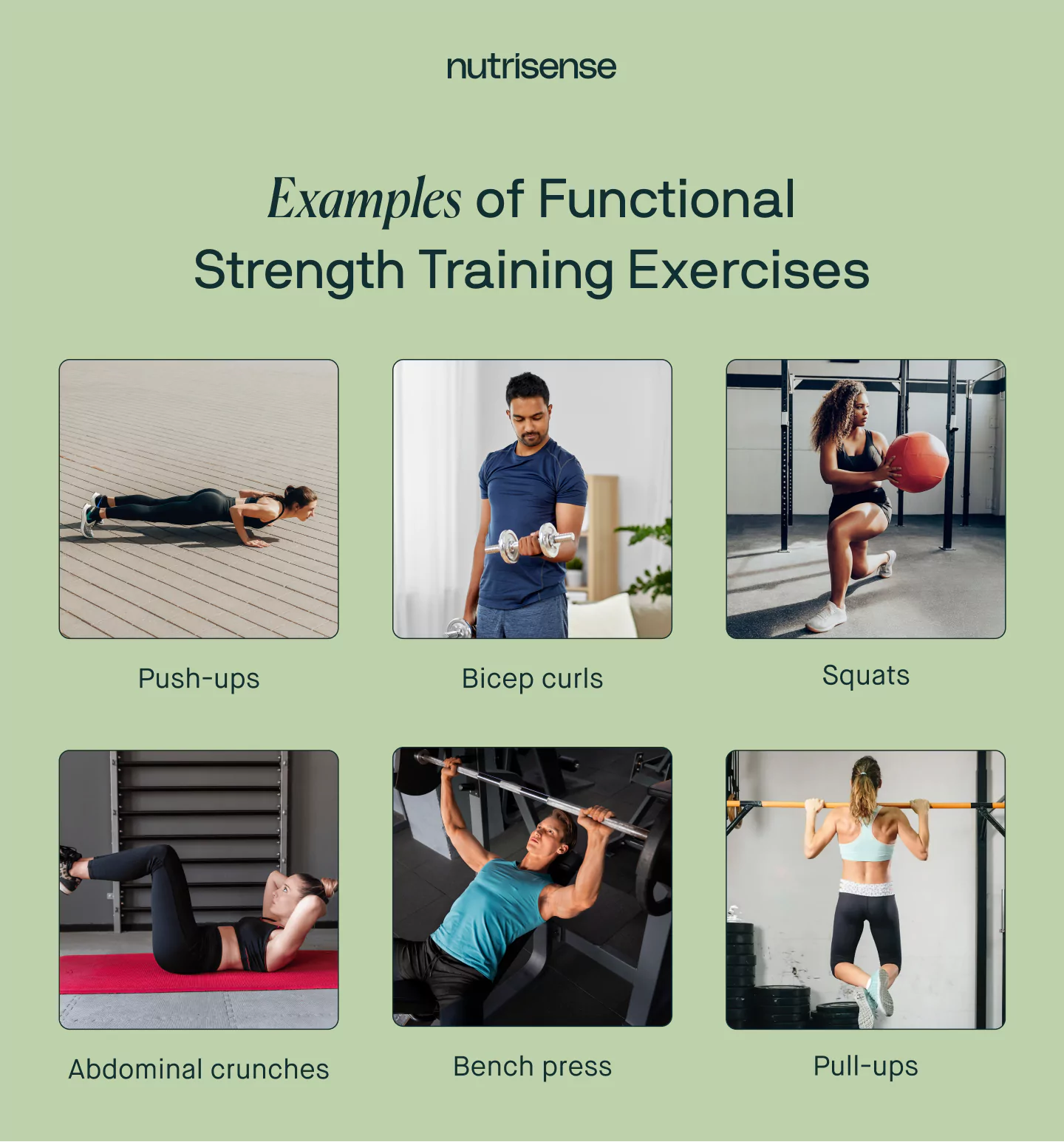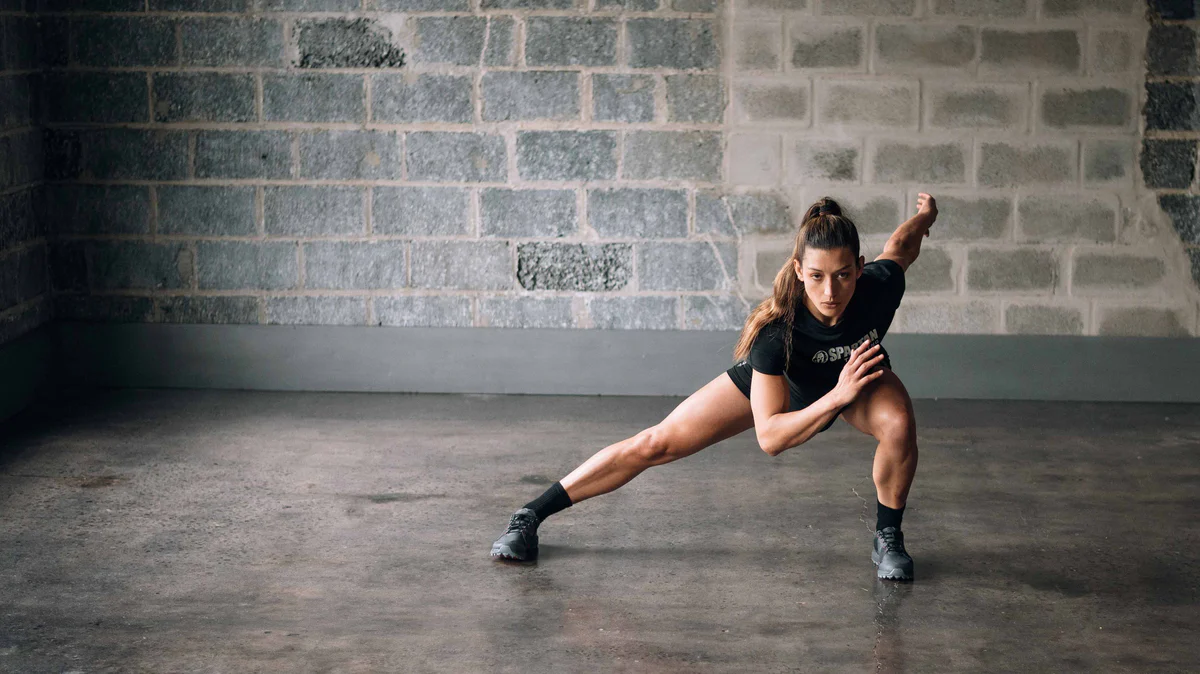Contents
- I. Introduction to Functional Strength Training
- II. Benefits of Functional Strength Training
- III. Functional Strength Training Exercises
- IV. How to Incorporate Functional Strength Training into Your Workout Routine
- V. Common Misconceptions about Functional Strength Training
- 1. Functional strength training is only for athletes
- 2. You need fancy equipment for functional strength training
- 3. Functional strength training will make you bulky
- 4. Cardiovascular exercise replaces the need for functional strength training
- 5. Functional strength training is only for young individuals
- VI. Frequently Asked Questions about Functional Strength Training
- 1. What is functional strength training?
- 2. How is functional strength different from traditional weightlifting?
- 3. Can I do functional strength training if I’m a beginner?
- 4. Is functional strength training only for athletes?
- 5. What are the benefits of functional strength training?
- 6. How often should I do functional strength workouts?
- 7. Can functional strength training help with weight loss?
- 8. Do I need any special equipment for functional strength training?
- 9. Should I consult a professional before starting functional strength training?
- 10. Can I combine functional strength training with other forms of exercise?
I. Introduction to Functional Strength Training

Welcome to the world of functional strength training! In this article, we will dive deep into the concept of functional strength training and explore its benefits, principles, and exercises. Whether you are an athlete looking to enhance performance or someone seeking overall fitness improvement, functional strength training can be a game-changer.
Functional strength training focuses on developing the strength and stability required for everyday movements and activities. Unlike traditional weightlifting that isolates specific muscles or body parts, functional training targets multiple muscle groups simultaneously to improve coordination, balance, flexibility, and overall functionality.
The Benefits of Functional Strength Training
Functional strength training offers a multitude of benefits that extend beyond just building muscle mass. Here are some key advantages:
- Improved Performance: Functional exercises mimic real-life movements and help athletes perform better in their respective sports by enhancing agility, power, speed, and endurance.
- Injury Prevention: By strengthening the stabilizer muscles surrounding joints and improving movement patterns under load or stressors,
- Increased Muscle Balance: Traditional weightlifting often leads to muscular imbalances as certain muscles become overdeveloped while others remain underutilized. Functional training ensures balanced development across various muscle groups.
- Better Core Stability: A strong core forms the foundation for all movements. Functional exercises engage the core muscles more effectively than isolated exercises like crunches or sit-ups.
The Principles of Functional Strength Training
To make your functional workouts effective and efficient, it’s crucial to understand these key principles:
- Movement Patterns: Emphasize compound movements that replicate real-life activities, such as pushing, pulling, squatting, lunging, twisting, and bending.
- Progressive Overload: Gradually increase the difficulty of exercises by adding resistance or intensity to continually challenge your muscles and stimulate growth.
- Balanced Training: Incorporate exercises that target all major muscle groups to avoid imbalances and promote overall strength development.
Functional Strength Training Exercises
Now that we’ve covered the basics, let’s explore some popular functional strength training exercises:
- Squat Variations: Squats are fantastic for developing lower body strength. Try goblet squats, front squats, or Bulgarian split squats for variety.
- Lunge Variations: Lunges work your legs while also improving balance and stability. Experiment with walking lunges or reverse lunges.
- Pull-Up/Chin-Up Variations: These compound upper body exercises engage multiple muscles simultaneously. Use different grips like wide grip or neutral grip pull-ups to target various muscle groups.
- Push-Up Variations: Push-ups strengthen the chest, shoulders, triceps while also engaging core muscles. Explore incline push-ups or diamond push-ups for added challenge.
If you’re looking to improve your overall fitness level by enhancing everyday movements and preventing injuries in a functional way,
This article serves as an introductory guide to help you understand the essence of functional strength training. Stay tuned!</p
II. Benefits of Functional Strength Training

Functional strength training is a highly effective form of exercise that offers numerous benefits to individuals of all fitness levels. By incorporating functional movements into your workout routine, you can improve your overall strength, flexibility, and stability while enhancing your performance in daily activities and sports.
1. Enhanced Physical Performance
One of the primary benefits of functional strength training is its ability to improve physical performance. By engaging multiple muscle groups simultaneously, functional exercises mimic real-life movements and challenges faced in various activities or sports. This type of training helps increase power, speed, agility, coordination, and endurance.
2. Injury Prevention
Functional strength training focuses on strengthening the muscles that support joints and promote proper movement patterns. By building balanced muscular strength throughout the body, this form of exercise can help reduce the risk of injuries caused by muscle imbalances or weak stabilizer muscles.
3. Improved Core Stability
The core plays a vital role in maintaining stability during movements and providing a solid foundation for all other exercises. Functional strength training emphasizes core engagement through dynamic movements that activate not only the superficial abdominal muscles but also the deep stabilizing muscles surrounding the spine.
4. Increased Muscle Strength and Endurance
This type of training engages both large prime mover muscles as well as smaller supporting muscles simultaneously. As a result, functional strength training helps build overall muscle strength while improving muscular endurance by challenging muscles to sustain effort over an extended period.
5. Weight Management
The high-intensity nature of functional workouts promotes calorie burning during exercise sessions and boosts metabolic rate even after completing the workout due to increased post-exercise oxygen consumption (EPOC). Incorporating functional strength training into your fitness routine can aid in weight management by helping you burn calories more efficiently.
6. Increased Flexibility and Range of Motion
Functional exercises often involve movements that require a wide range of motion, promoting flexibility in joints and muscles. By performing exercises that mimic real-life activities, functional strength training helps improve overall flexibility, making everyday movements easier and reducing the risk of muscle strains or joint injuries.
7. Better Posture and Body Mechanics
The emphasis on core engagement and proper movement patterns in functional strength training helps improve posture, alignment, and body mechanics. By strengthening the muscles responsible for maintaining good posture, this form of exercise can alleviate back pain caused by poor posture habits or muscular imbalances.
Incorporating functional strength training into your fitness routine offers numerous benefits beyond traditional weightlifting exercises. From enhanced physical performance to injury prevention and improved overall well-being, this type of exercise can help you reach your fitness goals while enjoying a more active lifestyle.
III. Functional Strength Training Exercises

Functional strength training exercises are designed to improve your overall physical abilities and help you perform everyday tasks more efficiently. These exercises focus on multiple muscle groups at the same time, mimicking real-life movements and challenges.
1. Squats
Squats are a fundamental functional strength exercise that targets the lower body, including the quadriceps, hamstrings, glutes, and core muscles. Stand with your feet shoulder-width apart, lower yourself down as if sitting back into a chair while keeping your chest up and knees tracking over your toes. Push through your heels to return to the starting position.
2. Deadlifts
The deadlift is an excellent compound exercise that primarily targets the posterior chain muscles in your hips, glutes, hamstrings, and lower back. Begin with feet hip-width apart and grip a barbell or dumbbells just outside of your legs. Keep a flat back as you hinge forward from the hips until you feel tension in your hamstrings. Engage your core and drive through your heels to stand up straight while lifting the weights along with you.
3. Push-Ups
Push-ups work several muscle groups simultaneously including chest muscles (pectoralis major), shoulders (deltoids), triceps brachii (back of arms), abdominals (core) throughout its entirety etcetera making it one of the best functional upper body exercises for building both strength and stability.
Keep hands slightly wider than shoulder-width apart on either side of chest
Extend legs behind so weight is supported on toes.
Lower body by bending arms until elbows are at 90-degree angles.
Pushing body up without locking elbows out repeat for desired reps before resting.
4. Lunges
Lunges are a dynamic lower body exercise that targets the quadriceps, hamstrings, glutes, and calves. Begin by standing with your feet hip-width apart. Take a step forward with one foot and lower your body until both knees are at 90-degree angles. Push through your front heel to return to the starting position and repeat on the other side.
5. Planks
Planks are an excellent core exercise that also engages muscles in the shoulders, back, glutes, and legs. Start by getting into a push-up position but resting on your forearms instead of your hands. Engage your core muscles and hold this position for as long as possible while maintaining proper form.
6. Farmers Carry
The farmer’s carry is a functional strength exercise that works multiple muscle groups simultaneously including grip strength in hands
Begin by standing up straight with dumbbells or kettlebells in each hand.
Keep shoulder blades down while walking maintaining a good posture without any hunching over.
Walk for desired distance before resting.
Remember to consult with a fitness professional before attempting any new exercises to ensure proper form and technique.
Functional strength training can be tailored to fit individual needs and goals, making it suitable for people of all fitness levels. Incorporating these exercises into your workout routine will help improve overall strength, stability, mobility, and enhance performance in daily activities or sports-related movements
IV. How to Incorporate Functional Strength Training into Your Workout Routine

Functional strength training is an essential component of a well-rounded fitness routine. It focuses on improving your body’s ability to perform everyday movements with ease, increasing overall strength, flexibility, and stability. If you’re looking to incorporate functional strength training into your workout routine, here are some effective ways to get started:
1. Identify your goals
Prioritize which areas of functional strength you want to improve upon. This could include activities like lifting heavy objects, improving balance and coordination, or enhancing core stability.
2. Choose functional exercises
Select exercises that mimic real-life movements and engage multiple muscle groups simultaneously. Squats, lunges, deadlifts, push-ups, planks are excellent examples that target various muscle groups while promoting overall functionality.
3. Incorporate compound movements
Incorporate compound exercises into your routine as they work multiple joints and muscles together in one movement pattern. These exercises not only build functional strength but also enhance overall performance and calorie burn.
4. Prioritize full-body workouts
Avoid isolating specific muscles during your workouts; instead focus on full-body routines that engage various muscle groups simultaneously for better coordination and functionality.
5.Include balance and stability exercises
Incorporate exercises that challenge your balance and stability such as single-leg deadlifts or standing yoga poses like tree pose or warrior III pose.
* Bonus Tip *
If you’re new to functional strength training or unsure about the proper form for certain exercises, consider working with a qualified personal trainer who can guide you through the correct techniques while ensuring safety during the workouts.
Remember, consistency is key when it comes to functional strength training. Aim for at least two to three sessions per week, gradually increasing the intensity and difficulty of your workouts as you progress. With dedication and perseverance, you’ll soon reap the benefits of improved functionality in your daily life.
V. Common Misconceptions about Functional Strength Training
Functional strength training has gained popularity in recent years as people recognize the importance of functional movement patterns in their fitness routines. However, there are still some misconceptions surrounding this type of training that need to be addressed.
1. Functional strength training is only for athletes
One common misconception is that functional strength training is exclusively for athletes or individuals involved in sports. While it’s true that athletes can benefit greatly from this type of training, functional movements are essential for everyone’s daily activities and overall well-being. Functional strength exercises help improve mobility, stability, and balance, making them suitable for individuals of all fitness levels.
2. You need fancy equipment for functional strength training
Another misconception is that you require expensive or specialized equipment to perform functional strength exercises effectively. While certain tools like kettlebells, resistance bands, or suspension trainers can enhance your workouts, they are not necessary to reap the benefits of functional training. Many bodyweight exercises such as squats, lunges, push-ups, and planks can effectively target multiple muscle groups and improve functional movements without any equipment.
3. Functional strength training will make you bulky
A common concern among individuals considering functional strength training is that it will make them look bulky or overly muscular. However, this couldn’t be further from the truth. Functional exercises focus on improving movement patterns rather than isolating specific muscles for hypertrophy (muscle growth). The aim is to enhance overall body functionality and performance rather than solely focusing on aesthetics.
4. Cardiovascular exercise replaces the need for functional strength training
Sometimes people believe that engaging in cardiovascular activities such as running or cycling eliminates the necessity of incorporating functional strength exercises into their routine. While cardiovascular exercise is important for cardiovascular health and endurance, it doesn’t replace the benefits of functional strength training. Functional exercises help improve joint stability, flexibility, and muscular strength in ways that traditional cardio workouts cannot.
5. Functional strength training is only for young individuals
There is a misconception that functional strength training is suitable only for young individuals or those in their prime years. In reality, functional movements are essential for people of all ages to maintain independence and perform daily activities without limitations. Functional exercises can help older adults improve balance, coordination, and overall body strength to prevent falls and maintain an active lifestyle.
VI. Frequently Asked Questions about Functional Strength Training
Functional strength training is a popular form of exercise that focuses on improving your overall strength and functionality in daily activities. If you’re new to this type of training or have some questions about it, we’ve got you covered. Here are some frequently asked questions about functional strength training:
1. What is functional strength training?
Functional strength training involves performing exercises that mimic movements used in everyday life, such as squatting, lifting, pushing, pulling, and rotating. It aims to improve your ability to perform these movements more efficiently and safely.
2. How is functional strength different from traditional weightlifting?
In traditional weightlifting programs, the focus is often on isolating specific muscles for hypertrophy (muscle growth). Functional strength training, on the other hand, emphasizes full-body movements that engage multiple muscle groups simultaneously.
3. Can I do functional strength training if I’m a beginner?
Absolutely! Functional strength training can be modified to suit any fitness level or experience level. Beginners can start with bodyweight exercises and gradually progress to using resistance bands or weights as they build their strength.
4. Is functional strength training only for athletes?
No! While athletes often incorporate functional movements into their workouts to enhance their performance in sports-specific activities, anyone can benefit from this type of training – regardless of age or fitness level.
5. What are the benefits of functional strength training?
– Improved balance and coordination
– Enhanced muscular endurance
– Increased flexibility and mobility
– Reduced risk of injuries in daily activities
– Better overall physical performance
6. How often should I do functional strength workouts?
The frequency of your workouts depends on your goals, fitness level, and schedule. Ideally, aim for at least two to three sessions per week to allow for proper recovery and progress. However, it’s important to listen to your body and avoid overtraining.
7. Can functional strength training help with weight loss?
Yes! Functional strength training can be an effective tool for weight loss because it boosts metabolism, builds lean muscle mass, and increases overall calorie expenditure during and after workouts.
8. Do I need any special equipment for functional strength training?
No! While certain equipment like dumbbells or resistance bands can add variety and intensity to your workouts, many functional exercises can be performed using just your bodyweight or everyday objects like water bottles or chairs.
9. Should I consult a professional before starting functional strength training?
If you’re new to exercise or have any underlying health conditions, it’s always a good idea to consult with a qualified fitness professional before starting any new workout program – including functional strength training.
10. Can I combine functional strength training with other forms of exercise?
Absolutely! Functional strength training can complement other forms of exercise such as cardiovascular activities (running, cycling) or flexibility exercises (yoga). It’s all about finding the right balance that suits your goals and preferences.
If you have more questions about functional strength training that weren’t answered here, don’t hesitate to reach out to a fitness expert who can provide personalized guidance based on your specific needs and goals!

Shelby Cortez is a dynamic and passionate individual with a strong background in the fitness industry. With a Bachelor’s degree in Exercise Science from the prestigious University of California, she has gained extensive knowledge about the human body and its mechanics. Shelby’s dedication to fitness goes beyond her education, as she has spent years honing her skills as a personal trainer and group fitness instructor. Her expertise in workout routines and nutrition has helped countless individuals achieve their fitness goals. Shelby’s commitment to health and wellness is evident in her own lifestyle, as she consistently pushes herself to new limits in the gym. Whether it’s weightlifting, yoga, or HIIT workouts, Shelby Cortez is the go-to expert for all things fitness-related.
